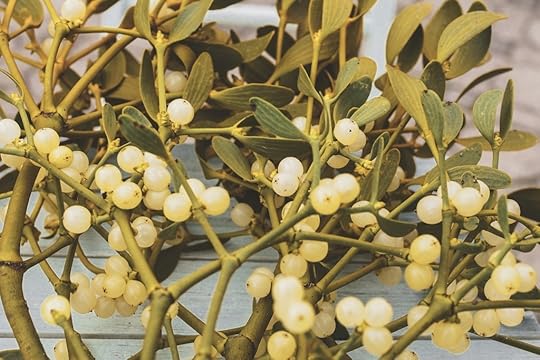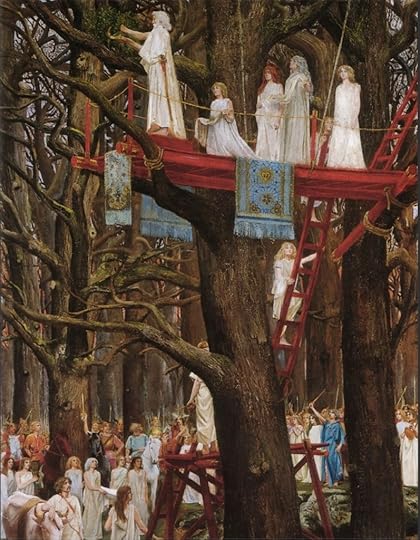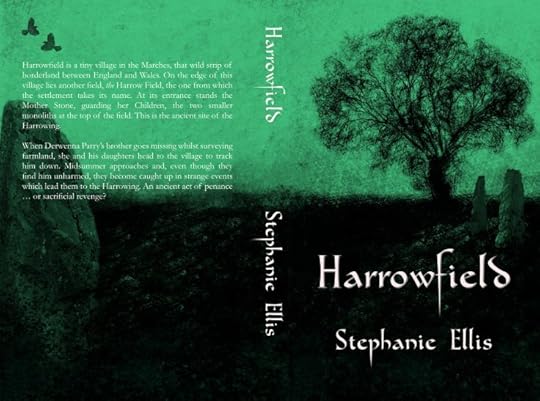Harrowfield – The Path of Green and Gold
Within my upcoming novel, Harrowfield, I have been playing with the imagery and folk lore of Britain to create a belief system within the village in which the tale is set. One such aspect is a reference to the ‘path of green and gold’. It is both a physical route and a metaphorical route linking the villagers of Harrowfield to the site of their beliefs. But what is the green and gold? Nothing more than the golden bough itself: mistletoe.

Mistletoe has long been a feature of folk lore and mythology. In its most famous instance, it was the one plant which had failed to promise never to harm Odin’s son, Baldr. Not because it refused, however, simply that Frigg had thought the shoot too young to be asked such a thing. Loki discovered this and subsequently tracked the plant down and gave it to Baldr’s brother, the blind god Hod, instructing him to shoot it at Baldr, thereby causing his death. (The Prose Edda, Snorri Sturluson).
Beyond this, it is James George Frazer, with his book, The Golden Bough, who has investigated its use in folk lore and mythology. The title of his work was taken from the reference in Virgil’s Aeneid which describes how the poet needed to obtain the sacred item in order to enter the Underworld.
Perch’d on the double tree that bears the golden bough.
Thro’ the green leafs the glitt’ring shadows glow;
As, on the sacred oak, the wintry mistletoe,
(The Aeniad)
Fraser takes this description as being mistletoe seen through ‘the haze of poetry or of popular superstition’. That the plant is needed to journey to the realm of the dead meant that it held the power of life and death itself. Indeed, its existence on the oak tree, the King of the Wood, is used to mirror the death of Baldr. Until the mistletoe is removed, the King cannot die. He also explains the gold colour as being the ‘rich golden yellow which a bough of mistletoe cut and kept for some months’, and references the sight of bunches of the plant being hung by Breton peasants in June. Much of what Fraser says, or at least his wilder theories, have been debunked, but his work does provide a great deal of inspiration in terms of creating a lore for a fictional work.
The premise that mistletoe is closely associated with the fall of the old king and the rise of his successor is continued in Robert Graves White Goddess:
Look, the twin-temple posts of green and gold
The overshadowing lintel stone of white.
For here with white and green and gold I shine –
Graft me upon the King when his sap rises
That I may bloom with him at the year’s prime,
That I may blind him in his hour of joy.
Druids were also referenced by Pliny (in his Natural History) as using the mistletoe for their rituals, describing how the priest ‘climbed the oak and cut the mistletoe with a golden sickle’ and once cut, sacrifices were made. The writings from this time should be treated with caution, being a product of hearsay or imagination rather than the reality, and Ronald Hutton reinforces this in his well-researched and informative Blood and Mistletoe: The History of the Druids in Britain. For instance he disputes that Lindow Man, the remains of a body found in Lindow Moss, definitely died as a result of a ritual killing – he could have just been executed. And yes, his stomach held traces of mistletoe pollen, but that could easily have contaminated his last meal. If you read this particular book, be warned you might be disappointed to find that so much that is taken as true when it comes to Druids is make-believe and invention.

These days mistletoe is simply regarded as the plant under which people kiss at Christmas. Yet much of its mythology actually centres on its supposed power over life and death.
In Harrowfield, the path of green and gold is followed in its own way. Whether that is to an end or a beginning, you will have to find out for yourself.
Out October 1st.
Pre-order



